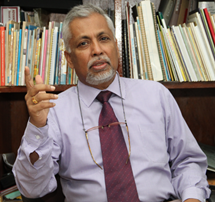'Recent fertility increase and neglect of contraceptive need for older women in Sri Lanka',Presidential Address- Population Association of Sri Lanka, Scientific Sessions and Annual General Meeting, 05th July 2014 at the Hector Kobbakaduwa Agrarian Research and Training Institute.
‘Recent fertility increase and neglect of contraceptive need for older women in Sri Lanka’,Presidential Address- Population Association of Sri Lanka, Scientific Sessions and Annual General Meeting, 05th July 2014 at the Hector Kobbakaduwa Agrarian Research and Training Institute.
Abstract:
This study shows that Total Fertility Rate (TFR) in Sri Lanka has further increased to 2.51, an increase of 6.4 percentage points from its previous level in the mid 2000. The analysis further revealed a significant increase of fertility among older women in the reproductive age span compared to previous fertility pattern in the country. Data demonstrates that age-specific fertility rates (ASFR) in the mid 2000 have gone up in all the age groups compared to the values obtained in 2000 but surprisingly ages 35 years and above in 2012 showed a remarkable increase compared to previous years. Amazingly, this indicates an unexpected outcome despite the prevalence of government and non-governmental fertility control programmes. This is a very unusual fertility behavior by the older women in the reproductive age span because we typically observe that older women terminating their childbearing at an earlier age than previous years which is a strong indicator of the third stage of the fertility transition. It is a known fact that all the fluctuations in TFR in any country are due to fertility adjustments during the post transitional time periods. The study demonstrates that in Sri Lanka these adjustments were mainly due to factors such as postponement of births due to 30-year long war situation which concluded in 2009, adjustment of fertility behaviour by women during post tsunami disaster period, neglect of contraceptive use by the older women and unmet need for family planning for older women due to less focus of family planning programmes on older women. Furthermore, by examining the fluctuations in TFR in Sri Lanka, the study predicted that TFR is likely to reach replacement level of fertility in 2022, based on the resemblance of the TFR increase due to post-war baby-boom in the West.

